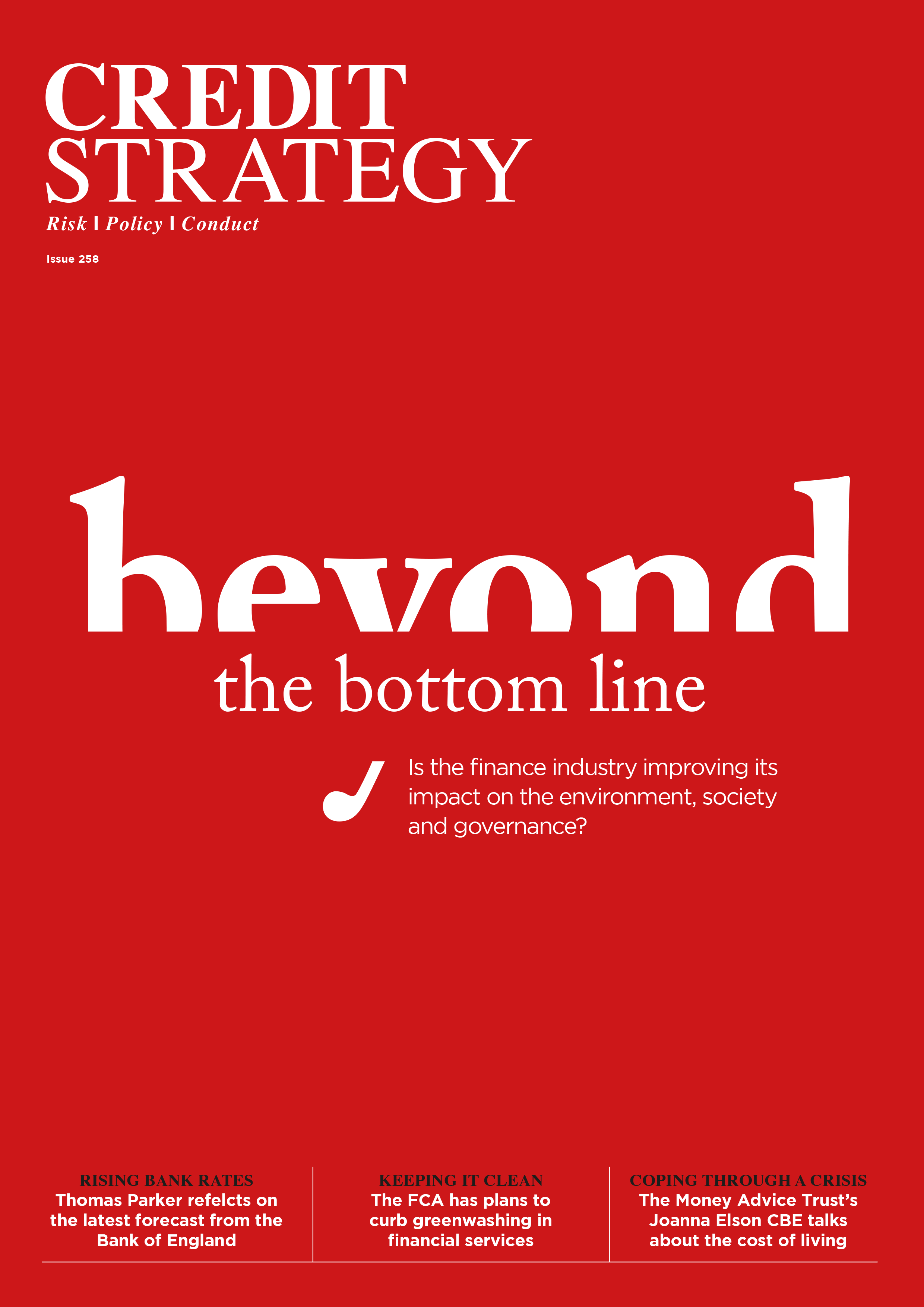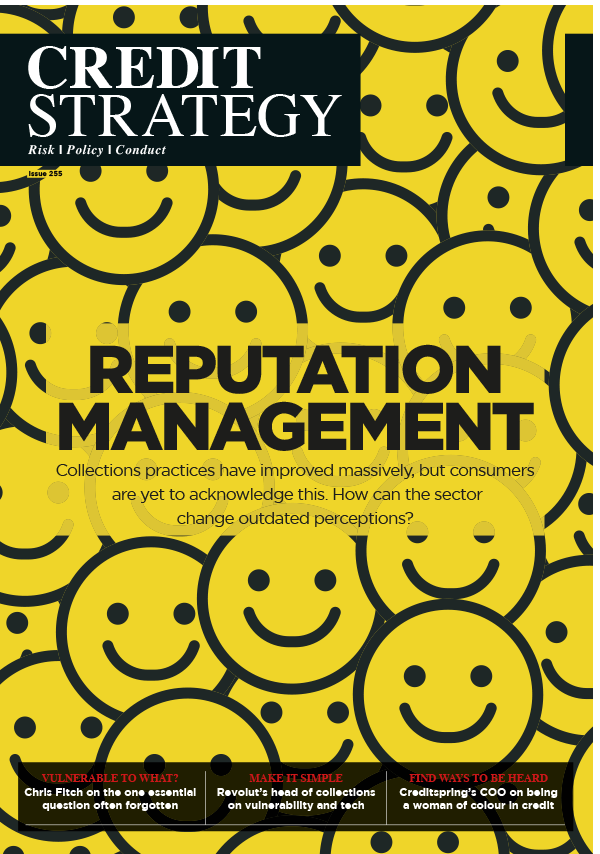What role can alternative data play in supporting Consumer Duty obligations?
As part of our Alternative Credit Data month, in partnership with LexisNexis Risk Solutions as part of the launch of their Global Consumer Lender Study, we examine how alternative data helps lenders meet Consumer Duty requirements amid economic challenges.

Senior Journalist, covering the Credit Strategy and Turnaround, Restructuring & Insolvency News brands.
Consumer Duty: It’s taken the place of Love Island, I’m a Celebrity and Bake-Off as the ultimate conversation starter for anyone involved in the credit and financial services world.
And for good reason. Its introduction has resulted in a radical shift in the way the regulator – namely the Financial Conduct Authority (FCA) – regulates firms, moving from a “rules-based approach” to one where outcomes are key.
Key to its implementation was setting new standards that require firms to provide a higher level of care for their customers. As part of this, lenders must show – among other things – that they offer products and services suitable for their customers.
The rules also mean the regulator expects firms to “respect customers’ varied needs”, including those in vulnerable circumstances, and offer helpful customer support which is easy to access.
These requirements have led to an adaptation in how businesses use data to learn about their customers. And they come at a critical time for many in the industry, with lending professionals grappling with significant challenges right across the customer lifecycle.
Delinquencies on the up
It’s no secret we’re going through a period of economic instability – not just here in the UK but across the globe – with the World Bank’s projections for the current financial year expecting global growth to be nearly half a percentage point below the 2010-19 average.
This slowdown is expected to hit more than 80% of the global population.
Meanwhile, the World Economic Forum’s latest Chief Economists Outlook survey suggests the global economy could weaken over the coming year.
The research – comprising leading chief economists from across the world – found that 37% believe conditions will decline in 2025, four times as many as those who expect it to strengthen.
As the report states: “If the economy is stabilising, it is doing so at the weakest level in decades. This weakness, compounded by political volatility in many countries, poses numerous threats in the years ahead.”
Given this context, it’s no surprise we’ve seen consumer confidence fall. Based on findings from its latest Global Consumer Confidence Index, research from Ipsos suggests that consumer confidence fell for the first time since March in November, dropping by 0.5 points to 48.6.
This has mostly been driven by consumers’ perceptions of the economic climate and their current purchasing, jobs and investment confidence – with this sub-index falling by 0.8 points to 39.1.
Additionally, both the expectations and jobs sub-indices fell by 0.4 points and now stand at 57.1 and 57.9 respectively.
It can also be no surprise that financial institutions have seen an uptick in delinquencies. Based on LexisNexis’ latest Global Consumer Lender Study, 40% of respondents said they have seen an increase in delinquencies over the last 12 months, with 91% expecting both delinquencies and defaults to either remain the same or increase over the next 12 months.
In the UK, 43% of respondents experienced increases in this space over the course of the last 12 months, with around 86% either expecting defaults to rise (36%) or remain stable at their current levels (50%).
How could this impact firms’ Consumer Duty obligations?
This increase has led to, and is likely to continue to lead to, increased volatility in customers’ financial circumstances – making it harder for lenders to decide both whom to lend to and, more importantly, which products are most suitable for each customer.
The volatility has also pushed more people into financially vulnerable circumstances, with as many as 20 million people now living under these conditions as of July this year – an uptick of 16% compared to 2022.
Meanwhile, 423,000 more households are expected to become “extremely financially vulnerable” – facing low discretionary income and savings.
Despite this, based on its Consumer Duty review published earlier this year, the FCA has said it has seen firms fail to address weaknesses in processes to track vulnerable customers across multiple product sets and gaps in data and servicing capabilities.
Outside of this, there’s some concern the Duty has led to more “risk-averse” lending – with the ability to demonstrate “good outcomes” for borrowers with challenging credit profiles becoming more difficult.
How can alternative data help?
At present, and as outlined in last week’s article, it’s widely agreed that while traditional credit data gives lenders a reliable foundational understanding of someone’s financial position, the data can lack the depth and currency to make accurate lending decisions.
Indeed, these pitfalls have been flagged by respondents to the Global Consumer Lending Confidence Study, with lenders now 59% less confident in their ability to compete when making consumer lending decisions based on traditional credit data alone.
Meanwhile, when asked what the greatest challenges were facing lenders with traditional credit data, by far the most common response was the limited visibility they had as to whether a consumer had a negative payment history.
These limits on visibility are why many lenders are turning to alternative data sources, with well over 60% of those surveyed using these sources to pre-screen customers (64%), for portfolio management (64%) or for loan origination (71%).
There’s also more trust in these forms of data. When asked how confident they are in making lending decisions with alternative credit data compared to a year ago, 86% said they were more confident.
This is why we’ve now seen its use expand beyond simply loan origination, with 64% of respondents leveraging an alternative credit risk score for portfolio monitoring showing lenders are using additional data resources to monitor signs of financial stress more closely.
As explained by an attendee of a recent Credit Strategy premium member roundtable: “The more information we have, the better it is for customers.
“It allows us to tailor the lending to their needs and circumstances. Of course, we don’t always get it perfectly right, otherwise there’d be no job in credit risk, and we’d have no default and that’d be great, but this is about getting as much information as possible to build that full picture of the customer profile and financial commitments.”
Indeed, this point was flagged by the FCA, which said in its implementation that firms needed better data and monitoring strategies – adding that it really wants firms to “think seriously about what information they need” to truly understand their customers’ outcomes and issues they may be facing.
By using alternative data sources, businesses are able to build a more holistic picture of an applicant and get a better sense of who they are and, in turn, both their propensity to pay and which product is most suitable for them.
As the financial services industry continues to navigate both Consumer Duty requirements and economic headwinds, the role of alternative data has become increasingly critical.
Not only does it help lenders meet their regulatory obligations by providing a more comprehensive view of customers’ circumstances, but it also enables them to make more informed lending decisions in an uncertain economic climate.
With traditional credit data alone no longer sufficient, the integration of alternative data sources isn’t just a competitive advantage – it’s becoming essential for responsible lending and ensuring good customer outcomes.
Stay up-to-date with the latest articles from the Credit Strategy team
Get the latest industry news






